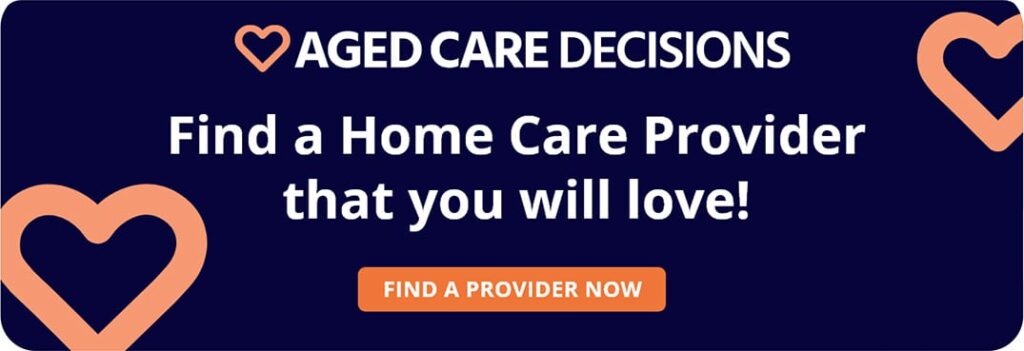Understanding the financial aspects of aged care services is a necessary step in planning for either Support at Home Packages or Residential Aged Care. The Australian Government’s My Aged Care Fee Estimator helps individuals forecast potential fees based on their specific financial circumstances.
To use this estimator effectively, My Aged Care provides a structured Income and Assets Checklist. This checklist ensures users gather accurate financial information prior to obtaining an estimate.
This guide provides a detailed explanation of how to complete the checklist, the types of information required, and the rationale behind each component.

Purpose of the Income and Assets Checklist
The Income and Assets Checklist is designed to help users prepare for two distinct but related tasks:
- Using the My Aged Care Fee Estimator: The estimator requires specific financial inputs to generate an indicative cost of aged care services.
- Formal Income and Assets Assessment: If you wish to access government-subsidised aged care services, a formal financial assessment by Services Australia or the Department of Veterans’ Affairs (DVA) will determine your actual contributions.
Completing the checklist accurately will help ensure that the information entered into the estimator reflects your circumstances and aligns with the eventual formal assessment.
Scope of Information Required
For Support at Home Packages
Only information on income and financial assets is required. Details about property, other physical assets, and liabilities are not considered for home care fee estimation.
For Residential Aged Care
A complete disclosure is necessary, including:
- Income details
- Financial assets
- Property ownership
- Other assets (vehicles, collections)
- Relevant debts
Read more about the new aged care fees and charges as at 1 July 2025: Schedule of Aged Care Fees & Charges | Residential & Home Care
Income Details Required
The checklist categorises income in accordance with assessment methodologies used by Services Australia and DVA, which differ from taxable income calculations.
Types of Income to Include
- Government Pensions and Benefits:
Include payments such as the Age Pension, Service Pension, and Carer Payment. Exclude allowances like Rent Assistance, Pharmaceutical Allowance, and DVA Disability Compensation Payments.
- Rental Income:
Provide net rental income (gross rent less expenses like mortgage interest, council rates, insurance, and property management fees).
- Business Income:
Declare net income from any business activity, calculated after deducting business expenses but before personal income tax.
- Superannuation Income Streams:
Include income from:
- Account-based pensions
- Allocated pensions
- Lifetime annuities
- Market-linked pensions
- Defined benefit pensions
- Self-managed superannuation fund pensions
- Overseas Pensions and Income:
Include foreign pensions, rental income from overseas property, and income from foreign investments. Convert amounts to Australian dollars. Certain restitution payments, such as those relating to the Holocaust, are generally exempt.
- Income from Trusts and Private Companies:
Declare any income attributable to you from trusts or private companies, particularly if already included in previous Centrelink or DVA assessments.
- Other Income:
Include any employment income, income from life insurance products, or payments from home equity release products.
Save time and energy by letting us know your needs. Our friendly, experienced team will send a tailored report within 20 minutes. Get started here.
Deemed Income on Financial Investments
Income from bank accounts, shares, and similar investments is typically assessed under deeming rules rather than actual returns. You do not need to calculate deemed income yourself; the Fee Estimator applies government deeming rates automatically.
Assets Required for Disclosure
Financial Assets
You must include the current balances or values of:
- Bank accounts (savings, cheque, term deposits)
- Shares, bonds, and listed securities
- Managed investments (unit trusts, insurance bonds)
- Debentures and friendly society bonds
- Cash holdings, gold, and bullion
- Superannuation balances (for those over Age Pension age where no income stream has commenced)
- Gifts over $10,000 in a financial year or $30,000 over five years will be assessed as assets.
Real Property (Residential Aged Care Only)
- Principal residence value, reduced by any mortgage
- Retirement village entry contributions (net of exit entitlements)
- Investment properties (market value less mortgage)
Other Physical Assets (Residential Aged Care Only)
- Vehicles (cars, boats, caravans)
- Collectibles (antiques, art, stamps, coins)
- Household contents and personal effects (default value of $10,000 applied if not specified)
- Interests in private trusts or companies
- Foreign real estate and foreign-held assets
What About the Family Home?
This only applies to means-tested assessments.
If you retain your home, a portion of its worth may be assessed. From 1 July 2025, either $206,663.20 or the net market value (whichever is less) will be included.
For couples, ownership is split evenly. That means half of the lower amount—either the cap or the home’s value—is counted for each person.
The property won’t be assessed if it’s lived in by a protected person, such as:
- Your partner or dependent child
- A carer receiving an Australian Government income support payment who has lived there with you for at least two years
- A close relative on an income support payment who has shared the residence for at least five years
Debts and Liabilities (Residential Aged Care Only)
Only debts secured against declared assets should be listed. These include:
- Mortgages on investment properties
- Personal loans secured against specific items (e.g., a car loan secured by the vehicle)
- Charges over other declared assets
Do Not Include:
- Unsecured credit card debts
- Personal loans unrelated to asset acquisition
- Loans provided to third parties (such as children)
Why Accuracy Matters
Providing accurate information ensures the estimate you receive is realistic and comparable to the figures likely to result from your formal Services Australia or DVA assessment. Errors or omissions may result in misleading estimates and unexpected future costs.
How to Use the Fee Estimator
Once you have compiled the necessary information via the checklist, you can use the My Aged Care Fee Estimator online to calculate indicative costs. This tool will estimate:
- Support at Home Package Fees (including income-tested fees)
- Residential Aged Care Fees (including daily care fees, means-tested care fees, and accommodation contributions)
The tool outputs indicative costs only. Actual fees will be determined after completing the formal income and assets assessment.
Access the estimator at: www.myagedcare.gov.au
Preparing for the Formal Assessment
While the Fee Estimator provides an early indication of costs, a formal assessment is required before starting government-subsidised aged care. This assessment determines:
- Eligibility for subsidies
- Contribution amounts
- Accommodation supplements, where applicable
Formal assessments are conducted by Services Australia or the Department of Veterans’ Affairs, depending on your pension arrangements. Processing times vary and may take several weeks, particularly for complex financial situations.
Common Mistakes to Avoid
- Incorrectly Including Exempt Income: Certain pensions and allowances are excluded. Review the checklist carefully to ensure only assessable income is declared.
- Undervaluing Assets: Market values should reflect current sale value, not original purchase price.
- Omitting Foreign Assets: All international investments, properties, and income streams must be included in Australian dollars.
- Overlooking Secured Liabilities: Only debts secured against assets should be listed; unsecured debts are irrelevant for this process.
Professional Assistance
For those with complex financial circumstances (e.g., trusts, companies, SMSFs), it may be beneficial to seek advice from:
- Accountants familiar with aged care financial assessments
- Financial advisers specialising in retirement and aged care planning
These professionals can help ensure accuracy and provide strategies to manage aged care costs effectively.
The My Aged Care Income and Assets Checklist is a practical tool for organising the financial information required to estimate future aged care fees. It aligns closely with the requirements of the formal assessments conducted by Services Australia and the DVA.
Accurate completion of this checklist enhances the reliability of estimates produced by the Fee Estimator and provides clarity for financial planning purposes. For individuals seeking subsidised aged care services, this step is essential in understanding future financial commitments and making informed decisions.
Our trained, experienced and qualified team here at Aged Care Decisions can help you navigate these crucial steps with ease. Our 100% FREE service is both fast and independent, allowing you to find an aged care service that’s just right for you.
Here’s how our FREE service works:







